Read time: 2 minutes Short-chain per- and polyfluoroalkyl substances (PFAS) are increasing in the Canadian Arctic environment, with the most rapid increases occurring post-2000, according to a recent study in Geophysical Research Letters (April 2020). For example,...
Tags
Guide decisions during cell line development with more information at the intact level
Monitoring product quality attributes (PQAs) throughout monoclonal antibody (mAb) development is vital to ensuring drug safety and efficacy. By adopting orthogonal analytical techniques and integrating new technologies that have the potential to provide more information, it is possible to improve product quality and manufacturing efficiency and make more informed decisions.
Maximize NPS analysis with accurate mass spectrometry
LC-MS/MS is a powerful analytical tool in forensic toxicology testing that can support a variety of testing regimes such as screening, confirmation and quantitative workflows. More specifically, analysis of NPS using LC-MS/MS provides many advantages, including the ability to reliably detect new drugs and their metabolites from a variety of biological matrices.
Unlock the benefits of nominal mass spectrometry for NPS analysis
The development of analytical methods for the detection and quantitation of drugs and metabolites in a range of biological matrices is a challenging process. Forensic toxicology labs need a reproducible and reliable methodology to ensure the robustness of the data and the quality of the results. They also need robust and sensitive instrumentation that can detect drugs at trace levels with high specificity, especially when it comes to novel psychoactive substances (NPS), which can be difficult to monitor and control.

What has the Echo® MS system done for the pharma industry? (And don’t just take our word for it!)
SCIEX was very proud to have an illustration of the Acoustic Ejection Mass Spectrometry (AEMS) technology that powers the Echo® MS system on the front cover of the Journal of the American Society for Mass Spectrometry in January 2023. The associated article—Ultrahigh-Throughput Intact Protein Analysis with Acoustic Ejection Mass Spectrometry—was co-authored by scientists from SCIEX and Merck.
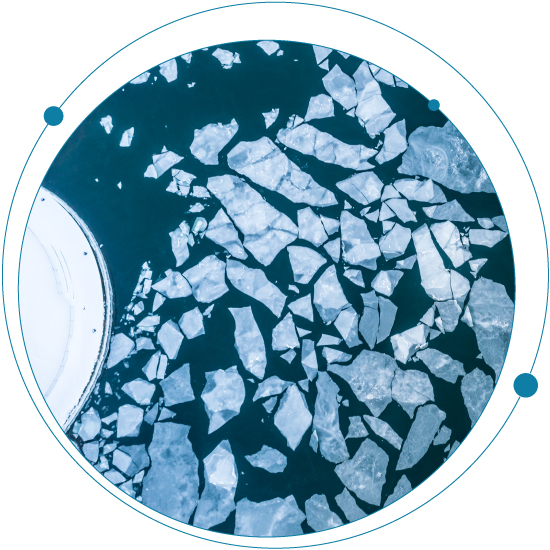
Short-chain PFAS compounds are on the rise- Craig’s PFAS Vodcast Cora Young
Read time: 2 minutes Short-chain per- and polyfluoroalkyl substances (PFAS) are increasing in the Canadian Arctic environment, with the most rapid increases occurring post-2000, according to a recent study in Geophysical Research Letters (April 2020). For example,...

Identifying the unknown PFAS profile in firefighting foams/AFFF
According to a recent study from Harvard University, the US EPA, and NIEHS, traditional targeted analysis techniques poorly characterize the PFAS composition of contemporary PFAS-based firefighting foams, know as aqueous film-forming foams (AFFF). Using the EPA 533 PFAS drinking water method for the analyte list, the researchers found that targeted mass spectrometry methods accounted for <1% of organic fluorine content. This is important because it demonstrates that targeted analysis methods miss nearly all the PFAS compounds in modern AFFF mixtures, thus underestimating the risk to human health and the environment.
Stay informed on the latest novel psychoactive substances (NPS) flooding the US drug market
Each year, the Drug Enforcement Administration (DEA) Special Testing and Research Laboratory publishes an Emerging Threat Report. The data contained in the report is updated quarterly and represents a snapshot of the drug evidence seized and analyzed by the DEA in the...
What is the difference between MRM3 vs MS/MS/MS (MS3)?
The MRM3 workflow and the MS3 scan are functionally the same QTRAP system scan, but used with different goals in mind. The main difference is how these scans are used in the whole MS workflow. With MS3 scans, you can use these in a data dependent mode for discovery...
Standard addition workflow – for quantification and calculating background levels
The method of standard addition is a quantitative analysis approach used in situations where matrix effects from complex samples contributes to the analytical signal. This makes it impossible to compare the analytical signal between sample and standard using a...
How do I define the experimental design (the metadata) for my SWATH acquisition study within the OneOmics suite? What are the requirement for replicates?
In quantitative Omics research, the goal is to understand which analytes (protein or metabolite) are perturbed between experimental conditions; therefore we carefully design our studies to explore these questions. The algorithms used within the Assembler application...

Detect the Signal, Not the Noise
Improving the specificity and selectivity of your assay Your LC-MS assay is only as good as its power to discern your target compound from everything else. Standards dissolved in clean solvents can make beautiful assays, but analytes in real-world samples can behave...

Software Licensing Comparison: Subscription or Perpetual?
Are you confused by software licensing? Do you want to know the difference between a subscription and a perpetual license? In this blog, we compare both options and explain the value of each choice for your laboratory. Years ago, the perpetual license model was the...
Make the Leap from GC to LC-MS/MS
Choosing the best technique for your analysis can be tough. Should you go with gas chromatography/mass spectrometry (GC-MS) or liquid chromatography/tandem mass spectrometry (LC-MS/MS)? That’s the key question. That’s why we’re here to help. The Limitations of...
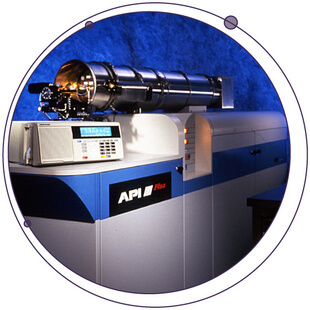
Sensitivity, It’s at the Very Heart of Who We Are
Walk into any modern pharmaceutical company these days, and you’ll likely find at least one if not many, SCIEX LC-MS/MS instruments. Assays for the detection and quantitation of small molecule drugs, metabolites, biotherapeutics, biomarkers, and many other analytes...

Uncovering the Links Between Childhood Growth, Body Size, and a Woman’s Risk of Breast Cancer
Welcome to the second in a series of posts marking International Women’s Day, and our ongoing support of World Cancer Research Fund. This installment is a review by Dr. Jennifer Baker, of her work, that, with the help of a WCRF grant, is studying body size and its links to breast cancer. Dr. Baker, Lead Investigator at Denmark’s Frederiksberg Hospital, has a Ph.D. in Human Nutrition from Cornell University. Her research focuses on clinical epidemiology.

A Multi-Omics Database for Tomato Research and Breeding
Ace. Beefsteak. Big Boy. Kumato. Early Girl. Roma. Sun Gold. San Marzano. These are just a few of the thousands of varieties of tomato plants available today. And while all of these varieties may be very different with respect to crop yield, disease resistance,...

Pathway to Success: Young Metabolomics Researchers Named in The Analytical Scientist’s Power List
The direct correlation of the metabolome to the phenotype means metabolomics is one of the most sought-after approaches for the study of disease and wellness, yet the separation, detection, quantification, and unambiguous identification of a chemically diverse...
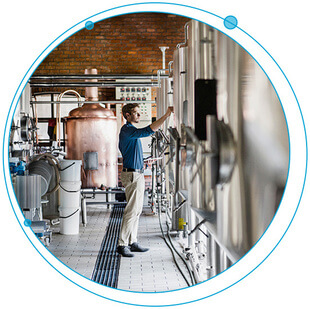
“Bottoms Up” Proteomics
Ahhhh beer. It's a ubiquitous drink found in over 90% of all countries around the world. Since the dawn of civilization, man has celebrated with beer where it can make even the most introverted person suddenly dance a little jig or belt out a top 40 song. But other...

Metabolomics Studies Benefit Biomedical Research
Professor Dr. Thomas Hankemeier, Head of the Division of Systems Biomedicine and Pharmacology, LACDRLACDR is a center of excellence for multidisciplinary research into drug discovery and development, with a strong focus on metabolomics. As part of its research...
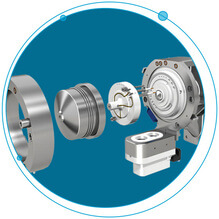
The Ultimate Selectivity for Peptide and Protein Quantitation
There’s no doubt about it, biopharma drug development is experiencing phenomenal growth and presents a variety of challenges not experienced in small molecule development. Some of these challenges are in the selective and sensitive quantitation of peptides and...

Maximize the use of your software. Buy only what you need
The latest releases of Analyst Software 1.7 and SCIEX OS Software 1.4 introduce a new licensing model called concurrent licensing. If you want flexibility and cost savings when purchasing and using your processing software, concurrent licensing is for you. How does...
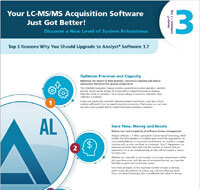
3 Reasons to Upgrade to Analyst Software 1.7
Would you be surprised to know that the SCIEX QTRAP® and Triple Quad™ mass spectrometry systems are ideally suited to meet the needs of any lab? Even more so as new orders will ship with our flagship Analyst® Software 1.7. The software is the single LC-MS/MS software,...
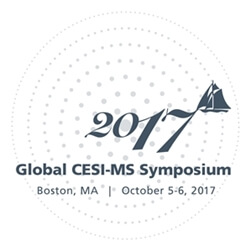
On Demand Videos from the 2017 Global CESI-MS Symposium
The 2017 Global CESI-MS Symposium brought together KOLs and industry innovators from around the world to share their latest advancements using capillary electrophoresis integrated with electrospray ionization (CESI-MS) within the same device.
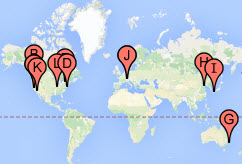
Multi-Laboratory Study Highlights the Quantitative Reproducibility of SWATH Acquisition (Nature Communications Paper)
Reproducibility is one of the key tenets of the scientific method. But in a recent survey published in Nature, more than 70% of researchers were not able to reproduce another scientist’s experiments, and more than half could not reproduce their own experiments1. While the reasons for this are many, at least some of them stem from issues inherent in data collection.
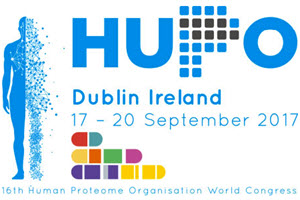
SCIEX Lands HUPO Science and Technology Award
We are pleased to congratulate its research scientists Stephen Tate and Ron Bonner (retired) for being awarded this year’s Science and Technology award at HUPO 2017 in Dublin Ireland. The Science and Technology Award at HUPO recognizes an individual or team who were key in the commercialization of a technology, product, or procedure that advances proteomics research
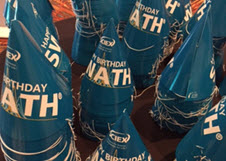
Happy Birthday to SWATH Acquisition! 5 Years of Innovation
With its introduction at the HUPO World Congress in 2010 in Sydney Australia by Ruedi Aebersold, SWATH® Acquisition instantly intrigued scientists around the world. Here was a new technique with the potential to revolutionize the way proteomics studies were performed! Based on a data independent acquisition strategy using a SCIEX TripleTOF® 5600 system, SWATH was able to consistently identify and quantify at least as many peptides and proteins as other far more mature proteomics strategies on the market, but with quantitative accuracy and reproducibility rivaling gold standard MRM experiments! This solution was made broadly available to researchers with a full launch of SWATH Acquisition in the Analyst® TF 1.6 Software on the TripleTOF 5600+ System at ASMS 2012 in Vancouver (A Mine of Quantitative Proteomic Information. Prof Dr. Ruedi Aebersold, Head of the Department of Biology, ETH Zurich).

5 Tips for Calibrating a QTOF Mass Spectrometer
Do you have questions about your mass spec? How about a workflow? Our community members are involved in active discussions and receive expert answers from customers like you, SCIEX scientists, and support specialists every week. One recent topic concerned the automatic calibration on TripleTOF® systems as answered by Dr. Christie Hunter whose focus is developing and testing innovative MS workflows for omics research through working collaboratively with the instrument, chemistry, and software research groups.
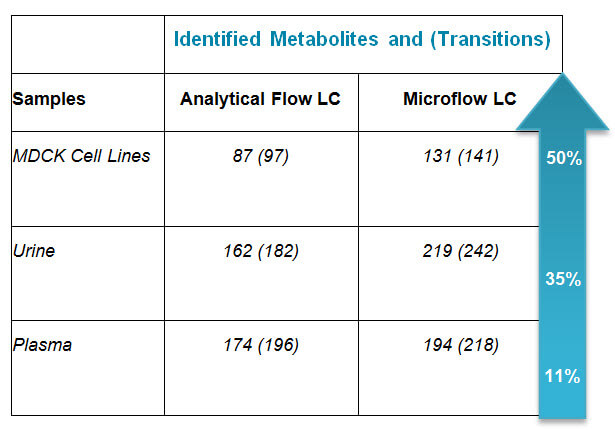
Why Microflow HILIC Chromatography for Targeted Metabolomics Applications?
I recently had the opportunity to catch up with Baljit Ubhi to discuss the top questions you’re asking in regards to using Microflow HILIIC Chromatography for Targeted Metabolomics. Here’s what Bal said:

Discover The Benefits of Knowledge Base Articles
Did you know you can access Knowledge Base Articles for trending user questions compiled and answered by SCIEX support experts? Doing so may help to reduce your support calls, not to mention downtime. Instead of waiting for a problem to occur, you can stay on top of it, and be a part of the solution. To give you an idea of trending articles, consider the how this past month saw questions and answers including:
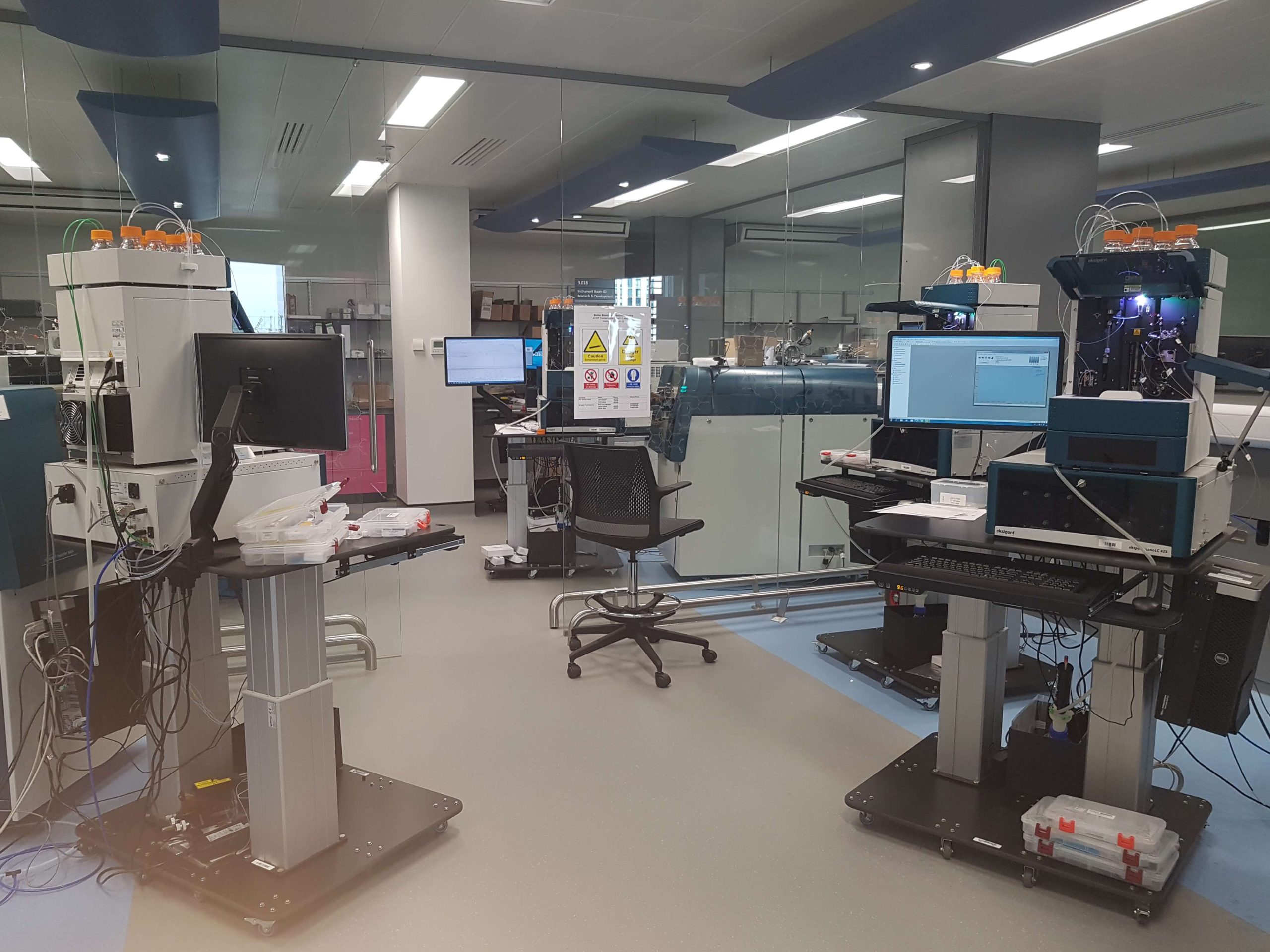
How Easy Is It to Relocate a Mass Spectrometer?
When you’re in the process of moving your lab, across the corridor or to another country, there’s a lot to think about. Adding to the stress, there’s not always a lot of time to plan, or budget allocated for the process, especially in the case of unexpected urgent maintenance work.



 Contact Support
Contact Support